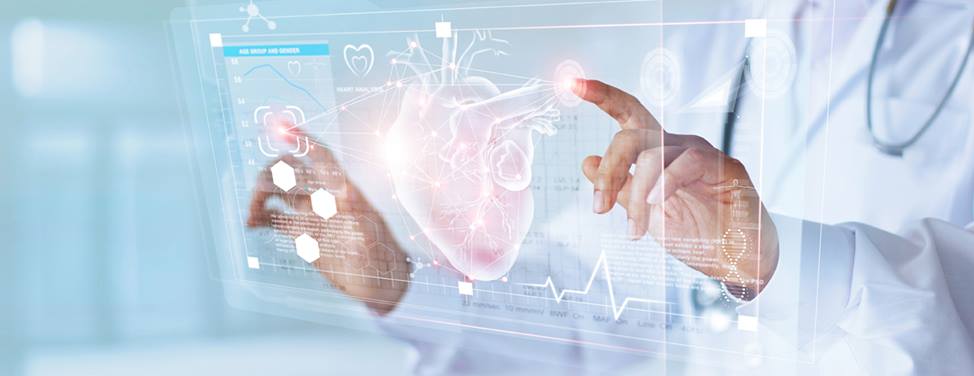
FAQ: Implantable Cardioverter Defibrillators
Many people have questions about implantable cardioverter defibrillators (ICDs) — how they work and why a doctor might decide to offer one as part of treatment for a disturbed heart rhythm. Here are a few common questions and answers.
- Will an ICD cure my heart rhythm problem?
- Is an ICD the right treatment for all rhythm disturbances?
- Do shocks from an ICD hurt?
- If someone touches me when I get an ICD shock, what will happen to them?
- After the device is implanted, can I return to life as it was before?
- Where will the defibrillator be placed?
- Is the implant procedure an open heart operation?
- How is the ICD powered?
- How often will my doctor check my ICD?
- Can people with defibrillators go near microwave ovens?
Will an ICD cure my heart rhythm problem?
No, it won't. Cure means to completely and permanently eliminate the condition and that's not what an ICD does. In some cases, an electrophysiogist can provide a cure for a rhythm disturbance, sometimes by performing an ablation.
An implantable defibrillator is most commonly used as a part of a patient's treatment. It acts instantly if your heart rhythm changes for the worse. It treats the problem, each time it occurs. Many doctors use an ICD in combination with rhythm control medications called antiarrhythmics. The goal, in such cases, is to use medication to keep the rhythm from getting too fast and to use the ICD as a "failsafe" device to protect you if your heart rate increases dangerously despite the medication.
Do ICDs treat all rhythm disturbances?
No. Implantable cardioverter defibrillators are intended to treat very serious rhythm problems that can arise in the lower portion of the heart, called the ventricles. In the future, ICDs will be available that can be used for patients with other rhythm problems.
Good heart rhythm control often can be achieved with medication alone. If your symptoms worsen or if the problem is persistent or potentially dangerous, your doctor may perform an electrophysiology (EP) study to learn more about the rhythm and the best treatments to deal with it. In some cases, an electrophysiologist may not need a study if the problem and its solutions are clear. If an ICD is one of the solutions, your doctor will know and discuss it with you.
Most patients who have received shocks from their ICDs describe them as startling, jolting and unsettling, but not painful. It's easy to understand why. The ICD delivers a shock to prevent a dangerously fast heart rhythm. The device recognizes the rhythm, which may cause discomfort — dizziness, lightheadedness, palpitations, an "about-to-faint" feeling — and then suddenly, the ICD shock brings the rhythm back to normal. The jolt is a powerful one to control the heart without delay.
If someone touches me when I get an ICD shock, what will happen to them?
Nothing will happen to them. A shock from an ICD is less powerful than a shock given externally such as shocks given by paramedics or emergency room workers who use "paddles" on the chest, called defibrillation. When we defibrillate someone externally, we use a great deal of energy to be certain there is enough to travel to the heart and do the job. The ICD shocks the heart directly, through wiring connected to the heart. It can achieve the same shock with far less energy than external devices. The energy that escapes to the surface, where someone might touch us, is very difficult to detect and completely harmless.
After the device is implanted, can I return to life as it was before?
In many cases, once treatment begins to control your heart rhythm, life can begin to return to normal. In addition to ICDs, treatments include medication, ablation, a pacemaker or a combination of these. Most patients return to work, school and their usual activities including driving, sexual relationships and exercise, once their doctors see that they're safe. How long it takes depends on the individual patient and the other medical problems you may have.
Where will the defibrillator be placed?
In the past, when ICDs were much larger, they were implanted in the abdomen. Now that they are smaller, doctors usually implant them in the chest, most often below the clavicle or collarbone, on the right or left side of the chest. You may feel and see the outline of the device under the skin.
Is the implant procedure an open heart operation?
No. Implanting an ICD is much simpler than it was a few years ago and often takes less than an hour.
The doctor who performs this procedure is the best source of information about what type of anesthesia will work best for you. As a rule, patients do very well with sedation to keep them in a light state of sleep, in combination with local anesthetic to numb the area where the device is implanted. The incision is usually a small one — three or four inches wide — and travels horizontally on the chest. After the ICD is in place and the incision is closed, the doctor applies a bandage to protect the site.
Most patients notice some soreness for about a week. Doctors advise patients with new ICDs to avoid getting the site wet for several days after it has been implanted.
Implantable cardioverter defibrillators are powered by batteries. The variety used has been chosen because of its long service period and the very predictable way in which its power is gradually used. If an ICD delivers a great many shocks, it will wear out sooner than one that seldom provides therapy. Most ICDs last five years and often more. Checking the battery is an important part of any evaluation of the device and doctors are careful to do this as a portion of their routine follow-up.
A normal clinic visit to the electrophysiologist or cardiologist usually includes an inspection of the device. This means that we use a piece of equipment, called a programmer, to "ask" the ICD to show its battery voltage, its settings, any rhythm disturbances it has detected and any therapy it has delivered since the last visit.
Long before the battery is ready to expire and long before the performance of the ICD changes in any way, an exam like this will show the doctor that the time is approaching to consider a replacement ICD. At that point, a brief hospital stay is arranged — typically no more than one or two days — to allow the doctor to remove the old ICD and replace it with a fresh one. Replacement procedures are often simpler than original implantations, and take the doctor and patient even less time.
How often will my doctor check my ICD?
Doctors vary in their opinions about this. Some say they prefer to see their ICD patients every two months or even more often when they feel the heart rhythm needs especially close observation. Others ask their patients to return every four to six months. This is more common among patients whose rhythms are quite stable.
Can people with defibrillators go near microwave ovens?
Yes. A number of years ago, when both ICDs and microwave ovens were made very differently, some ICDs reacted badly in the presence of old-style microwave ovens. As a result, ICDs were modified and are no longer affected by microwave ovens. This also is true for pacemakers. However, doctors advise ICD patients to avoid a few things, including:
- Very powerful magnets, such as those you might find in a junkyard to lift discarded automobiles or contained within the cases of powerful stereo speakers. Smaller, weaker magnets — like those used to hold notes on a refrigerator or those in telephone receivers — pose no difficulty.
- Very powerful electromagnetic fields generated by the equipment used for magnetic resonance imaging (MRI).
- The electromagnetic field near an automobile ignition system.
The main concern is that a very strong electromagnetic field temporarily deactivates the ICD. This effect persists only as long as the patient is in the field, returning the ICD to full function as soon as you move away from the magnetism. However, your doctor doesn't want your device's operation suspended even briefly.
UCSF Health medical specialists have reviewed this information. It is for educational purposes only and is not intended to replace the advice of your doctor or other health care provider. We encourage you to discuss any questions or concerns you may have with your provider.










